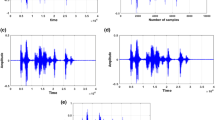Abstract
There are various data compression techniques available in the literature. But we have to follow Shannon’s theorem if we want efficient recovery of the desired signal after compression. If we follow Shanons’s theorem, then the rate at which we perform the sampling must be more than double the highest frequency component in the signal. But as we know that there are various applications present nowadays in which we have to store or transmit lots of data like MRI, RADAR, satellite communication, and other data transmission process, because of that this is so much tedious to follow Shannon’s theorem. To overcome this problem, researchers came up with a new approach which is known as compressive sensing, and if a signal is sparse in any domain, then a compressive sensing approach can be easily applicable. According to compressive sensing theory by using very few nonzero value samples, we can easily reconstruct the original signal. In this paper, the same compressive sensing approach is applied to the ten different words that are said by a single speaker. Basis pursuit algorithm is applied to reconstruct the original speech signal. To estimate the quality of speech signal, two approaches are used in this paper, one is signal-to-noise ratio (SNR) and another is mean square error (MSE).
Access this chapter
Tax calculation will be finalised at checkout
Purchases are for personal use only
Similar content being viewed by others
References
Candès EJ, Romberg J, Tao T (2006) Robust uncertainty principles: Exact signal reconstruction from highly incomplete frequency information. IEEE Trans Inform Theory 52(2):489–509
Donoho D (2006) Compressed sensing. IEEE Trans Inform Theory 52(4):1289–1306
Baraniuk R (2007) Compressive sensing. IEEE Signal Processing Mag 24(4):118–120, 124
Shukla UP, Patel NB, Joshi AM (2013) A survey on recent advances in speech compressive sensing. In: IEEE International Multi-Conference on Automation, Computing, Communication, Control and Compressed Sensing (iMac4s), pp 276–280, March
DeVore RA (1998) Nonlinear approximation. Acta Numerica 7:51–150
Kotelnikov V (1933) On the carrying capacity of the ether and wire in telecommunications. In Izd. Red. Upr. Svyazi RKKA, Moscow, Russia
Nyquist H (1928) Certain topics in telegraph transmission theory. Trans. AIEE 47:617–644
Shannon C (1949) Communication in the presence of noise. Proc Institute of Radio Engineers 37(1):10–21
Whittaker E (1915) On the functions which are represented by the expansions of the interpolation theory. Proc Royal Soc Edinburgh, Sec A 35:181–194
Wang Jia-Ching, Lee Yuan-Shan, Lin Chang-Hong, Wang Shu-Fan, Shih Chih-Hao, Chung-Hsien Wu (2016) Compressive sensing-based speech enhancement. IEEE/ACM Trans on Audio, Speech, and Lang Processing 24(11):2122–2131
Al-Azawi MKM, Gaze AM (2017) Combined speech compression and encryption using chaotic compressive sensing with large key size. IET Sig Proces 12(2): 214–218
Do TT, Gan L, Nguyen NH, Tran TD (2012) Fast and efficient compressive sensing using structurally random matrices. IEEE Trans on Sig Proces 60(1): 139–154
Mahdjane K, Merazka F (2019) Performance Evaluation of Compressive Sensing for multifrequency audio Signals with Various Reconstructing Algorithms. In: 6th International Conference on Image and Signal Processing and their Applications (ISPA), pp. 1–4. IEEE
Puy G, Ozerov A, Duong N, Pérez P (2017) Informed source separation via compressive graph signal sampling. In: 2017 IEEE International Conference on Acoustics, Speech and Signal Processing (ICASSP), pp 1–5
Candes E, Romberg J, Tao T (2006) Robust uncertainty principles: Exact signal reconstruction from highly incomplete Fourier information. IEEE Trans Info Theory 52(2):489–509
Acknowledgement
This research is supported by Visvesvaraya PhD Scheme, MeitY, Govt. of India with unique awardee number “MEITY-PHD-2946”. Recipient Mr. Vivek Upadhyaya.
Author information
Authors and Affiliations
Corresponding author
Editor information
Editors and Affiliations
Rights and permissions
Copyright information
© 2021 The Author(s), under exclusive license to Springer Nature Singapore Pte Ltd.
About this paper
Cite this paper
Upadhyaya, V., Salim, M. (2021). Speech Signal Compression and Reconstruction Using Compressive Sensing Approach. In: Singh Pundir, A.K., Yadav, A., Das, S. (eds) Recent Trends in Communication and Intelligent Systems. Algorithms for Intelligent Systems. Springer, Singapore. https://doi.org/10.1007/978-981-16-0167-5_2
Download citation
DOI: https://doi.org/10.1007/978-981-16-0167-5_2
Published:
Publisher Name: Springer, Singapore
Print ISBN: 978-981-16-0166-8
Online ISBN: 978-981-16-0167-5
eBook Packages: Intelligent Technologies and RoboticsIntelligent Technologies and Robotics (R0)




